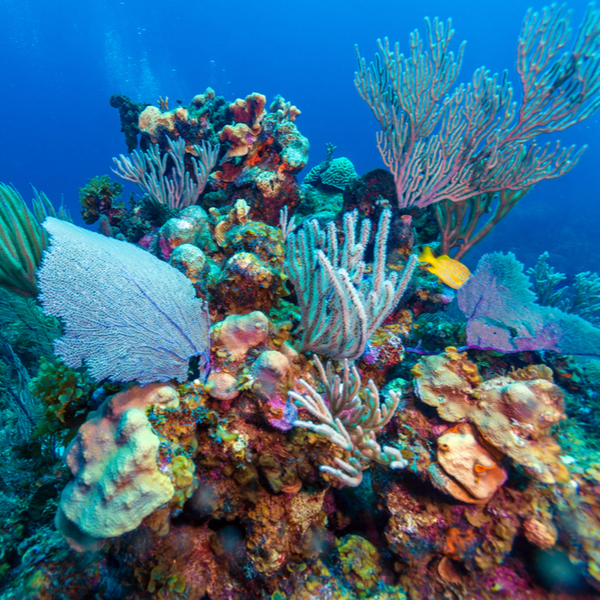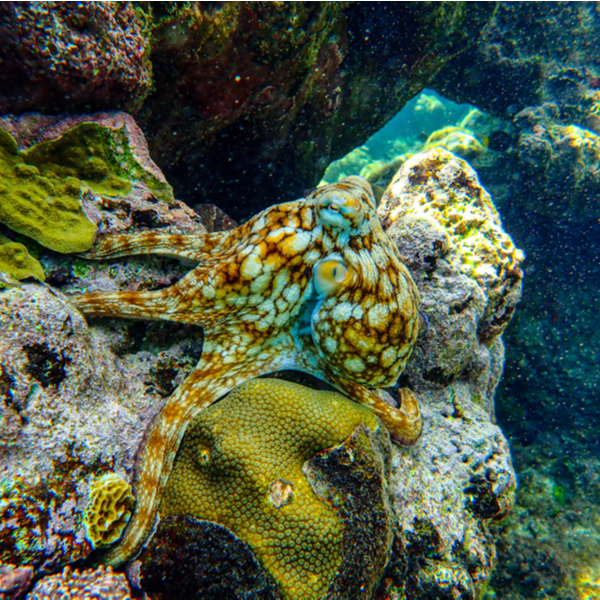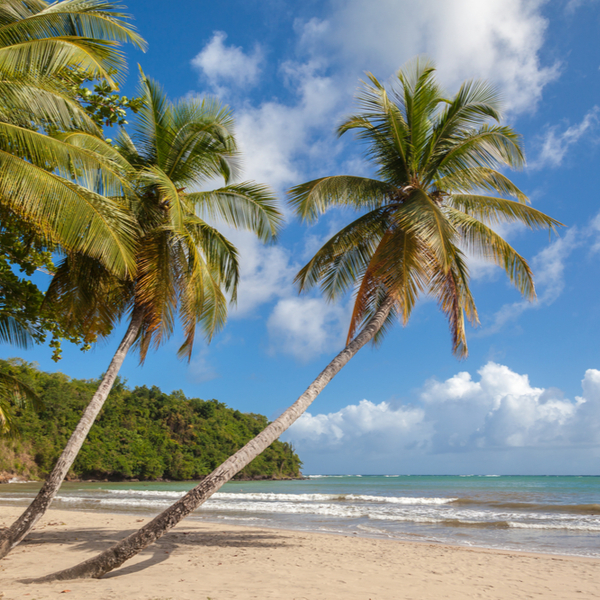The only thing better than frolicking in the calm Grenadian sea is snorkelling or scuba diving so you can experience the full majesty of the marine life under the surface. While there are plenty of places to snorkel and dive in Grenada, there’s no doubt some spots are better than others when it comes to astounding scenery and once-in-a-life-time chances to spot certain wildlife.
While scuba diving is a bit intensive for some, snorkelling offers the best of both worlds as there are a plethora of colourful fish and sparkling reefs just off the coast. It might not be as otherworldly an experience as scuba diving in Grenada, but it’s certainly a wowing experience.
If you’re keen to dive into the world of Grenada scuba diving and snorkelling, then read ahead.
Scuba Diving in Grenada
When is the best time to dive in Grenada?
Grenada has the benefit of being at the southern tip of the Caribbean, so a lot of the nasty winds and potential hurricanes usually don’t make landfall here – and the sea around the island remains somewhat clear year-round as a result. Of course, as always, the best scuba diving in Grenada will be during the dry season (Jan – May), but if you’re around during the rainy season and the day is mostly dry, it will still be good.

Best spots for scuba diving in Grenada
Like most island nations surrounded by idyllic sea, there are dozens of different great diving spots in Grenada, each with their own major benefits that make them so attractive to divers.
There are tonnes of exotic and interesting marine life just off the coasts and a bit further out; you’ll almost certainly spot sea fans and lizardfish, as well as octopuses and stingrays. If you’re lucky, you might also get a glimpse of black seahorses, although these are incredibly rare.
The most popular and famous dive site on the island is Bianca C, the largest shipwreck in the Caribbean and now home to an entire marine life ecosystem. Sometimes referred to as the ‘Titanic of the Caribbean’, it sunk in 1961. Sadly, it’s not really possible to get right inside the wreck, but you can take a dip in what was once the ocean liner’s swimming pool. If you’re keen on wildlife, eagle rays and reef sharks are often spotted here, as are smaller creatures of all stripes.
The Japanese Gardens are part of Boss Reef, which itself is almost five miles long. The gardens are a particularly bright and colourful part of the reef that is also much easier for beginner divers to traverse, and full of cool sea life like moray eels. If you’re lucky, you might also manage to spot a turtle!


Fans of Prince might get a bit excited by our next favourite Grenada dive spot: known as Purple Rain, it’s one of the most populous reefs in the entire sea around the Spice Isle. There’s everything from sponges to black durgeons, and, of course, purple Creole wrasse.
If you’re a bit more of an advanced diver, then Face of the Devil is an absolutely astounding dive: located right near an active underwater volcano called Kick’em Jenny, just north of the main island, there are a whole host of interesting fish and coral available to view, as well as the added exhilaration of knowing you’re swimming near something with such awesome power. Don’t fret, though – the volcano hasn’t erupted for two decades, and most eruptions before then were so small they didn’t cause any change on the surface of the sea.
Those who want to dive around somewhere where the route is a little more set, but also still want to see some interesting and unique sights, should head to Grenada Underwater Sculpture Park. Located right by the Molinere Reef System, the sculptures will have the eventual fate of becoming reefs themselves. Part dive, part historical and cultural tour of Grenada’s past, snorkellers can also have a swim through as it is incredibly shallow.


Our final favourite Grenada dive is Flamingo Bay. This explosion of colour is also in the Molinere Reef System, and there are dozens of different fish and coral species floating around at all times of the year. It’s also one of the best spots for night diving as the currents don’t get too strong, and the lighting is usually good. Again, like the Sculpture Park, you can snorkel here too – although you definitely will not be able to see it in all its glory, as the dive goes well below what most people can manage without specialist equipment.
Best Diving Companies
There are a whole host of diving companies and schools running in Grenada. While they all have their pros and cons, we have our favourites – sometimes because of great deals, sometimes their incredible staff, and sometimes just because we had a damn good time on the dive. Here are our suggestions for those looking for the best scuba diving schools in Grenada.
Beginners
Dive Grenada
Ideally located on the country’s southwestern coast just off Grand Anse Beach, this diving school is perfect for beginners. For those looking for a smaller commitment, they offer the PADI Discover Scuba Diving course, which teaches you basic skills in a comfort pool before you’re taken out to dive some of the nearby coral reefs with a trained instructor. At USD 165 for the course and rental, it’s well worth it if you’re keen to dip your toe into the world of Grenada dives.
However, if you know this is where you want to begin your scuba diving journey proper, then the PADI Open Water course is also available at USD 595, or USD 695 for the e-learning version if you want to complete your theory before you hit the Spice Isle.

The course takes 3-4 days, and is run by well-practiced, friendly instructors who’ll first share their skills with you in the pool, before taking you on four different open water dives. A must-do for anybody who wants to check out the best places to scuba dive in Grenada but is still a little green when it comes to it.

Intermediate/Expert
Eco Dive
Fun with a conscience is the name of the game at Grenada’s premier eco-diving school. They have several options available, from afternoon-long 1-tank dives for USD 82, to 6-dive packages over three days for USD 400. There’s also the chance to do night dives, both from the shore (USD 70) and from a boat (USD 90). If you’re a solo diver looking to meet some more people, then they also offer group tours, so it can be a fun, sociable experience as well as an exhilarating one.
What makes Eco Dive so special is their commitment to keeping the Grenadian coasts and sea clean. They have three full-time marine biologists on staff who monitor the local ecosystems, run monthly ‘clean-up’ dives, and have numerous other initiatives. Locally run, sustainable, and great value – what’s not to love?
Snorkelling
What is the best time to snorkel in Grenada?
Like with diving, the best time to snorkel is the dry season as that’s when water will be calmest and clearest. However, even in the wet season, you’re sure to spot some rare and beautiful wildlife.
Best spots for snorkelling in Grenada
The Grenada Underwater Sculpture Park is a great spot for snorkellers to spot something unique. This is one of the few underwater attractions that is undoubtedly just as interesting whether you dive or snorkel, so if you’re only donning the latter, make sure to give it a visit.


Although it may be an obvious pick, Grand Anse Beach is also a wonderful spot for snorkelling, as long as you stay away from the parts of the sea where the crowds congregate and scare off the most interesting fish and wildlife, including lobsters and sea fans.
Our final suggestion is La Sagesse. This is part of an identically named nature centre and is home to some brilliant coral and schools of smaller fish of all colours and stripes. There are three different beaches in the area, but all are great to wade out from if you’re keen to spot some cool wildlife.




















